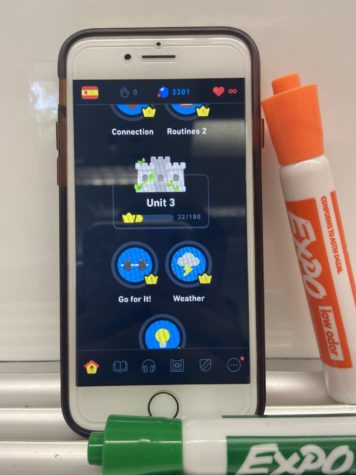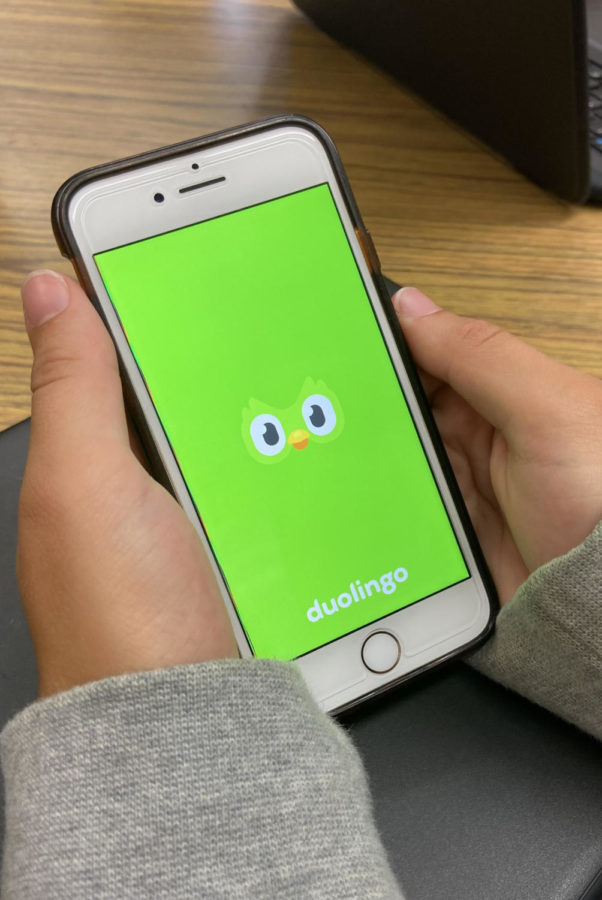Why Language Apps Should be Integrated into School
Language is a key part of the curriculum. With several levels of multiple languages taught by native speakers, including IB extensions and travel programs, Robinson’s language department is rich with opportunities for those involved.
However, there’s a somewhat unexplored resource that teachers could be using to their advantage. While the language department already frequently uses educational applications such as Kahoot!, PearDeck, and Quizlet to enhance students’ learning experience, it would be beneficial to incorporate language apps into the curriculum. Namely, apps like Duolingo and Babbel already support tens of millions of active users worldwide, and offer quick lessons for beginners and novices alike. Apps would prove especially helpful at lower levels, where additional practice in and out of the classroom could help form and reaffirm a more concrete foundation which students can then build up in school, or broaden the horizons of someone who already has minor experience in a language.
German teachers Frau Massey and Frau Ostermann Healey have been teaching at Robinson for 16 and 22 years respectively, and both have experiences with Duolingo in the classroom.
“For the students, especially some of my students who are currently using it, were doing things in class right now that they’re like ‘Oh, I’m doing that in Duolingo,’” said Massey.

Frau Ostermann Healey shared a similar experience.
“We just recently did a little questionnaire, this is just our, you know, our first two weeks into class, and one of the questions was ‘Can you count to ten in German?’ and half the class could, and I was like ‘How can you all count to ten?’ and they all said ‘Duolingo!,’” Ostermann Healey said. “In that sense, it’s really good, and knowing that, I think it might be a nice idea.”
In a poll of 50 students regarding the integration of language apps into the Robinson language curriculum, 94% of students agreed that it would be a good idea, while 6% stood against the proposal.
A lot of the units covered in school are also covered in Duolingo, so students could benefit by familiarizing themselves with the unit, through a method of learning that is naturally more hands-on and engaging. It’s no secret that students learn more effectively when they’re enjoying it. Countless studies, such as those done by Cognition Today, have shown that “having fun while learning avails unique cognitive resources, associates reward and pleasure with information, strengthen and broaden memory networks, and toggle between 2 basic neural modes – one for diffused mind-wandering and the other for focused attention.”
For new learners, it’s important to keep them interested by making the process fun. Language apps offer many ways to make learning a language interesting and engaging. Duolingo in particular offers daily challenges, monthly challenges, friend quests, a competitive leaderboard, and many more options that make the app feel almost like a game, rather than an educational service.
No app could replace the experience, expertise, and value of a teacher, nor should it. But language apps are a valuable resource for getting students to practice and learn language, and should be incorporated to some extent into schooling. One method might be by rewarding students extra credit for doing a certain amount of lessons. Duolingo provides a free classroom edition for teachers, allowing them to use Duolingo’s established curriculum to assign lessons to students enrolled in their class. Even something as simple as promoting an app’s use outside of school would be beneficial. Whether teachers are willing to implement language apps into their classroom or not, apps have been approved by teachers and students alike.



